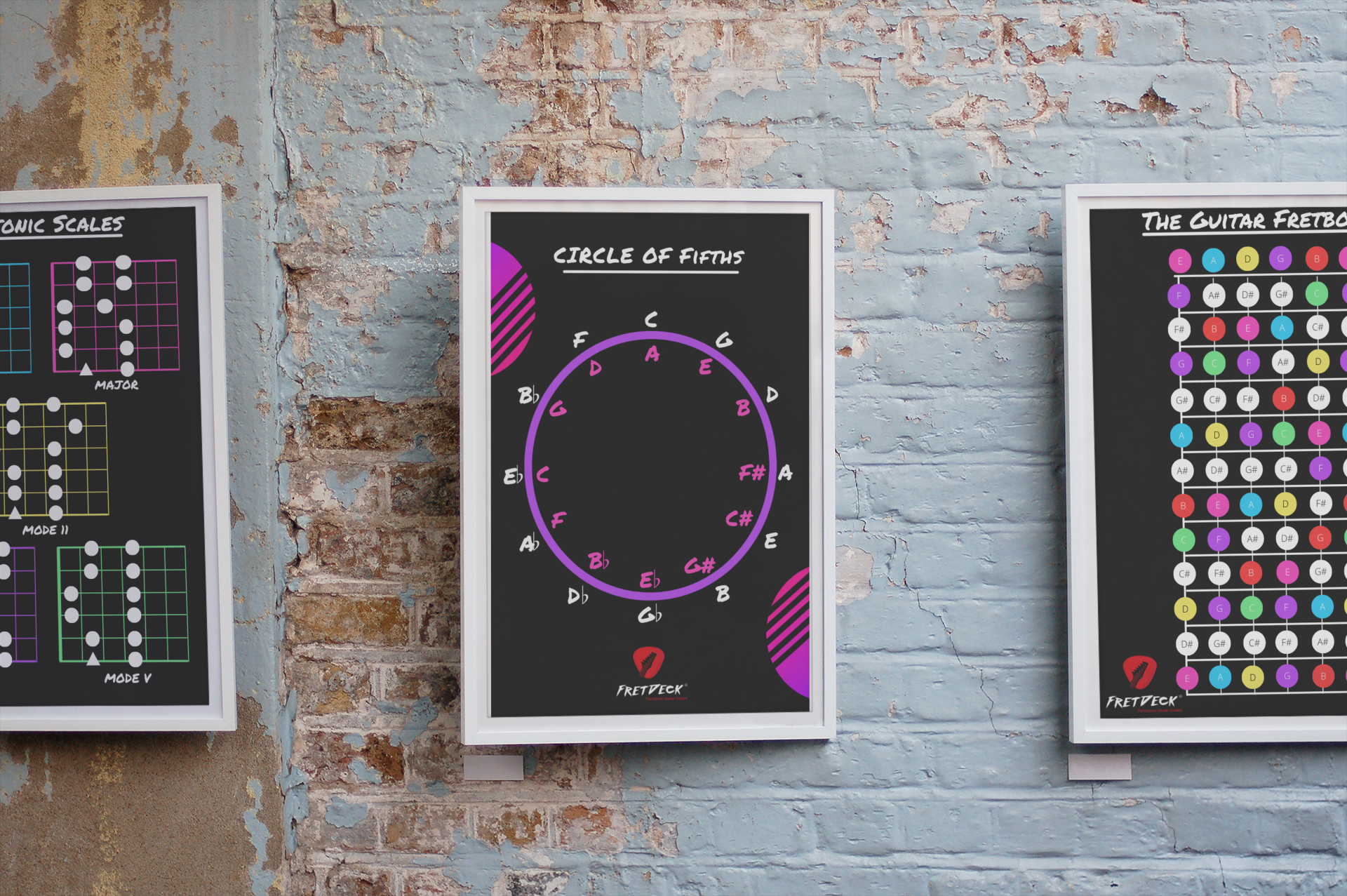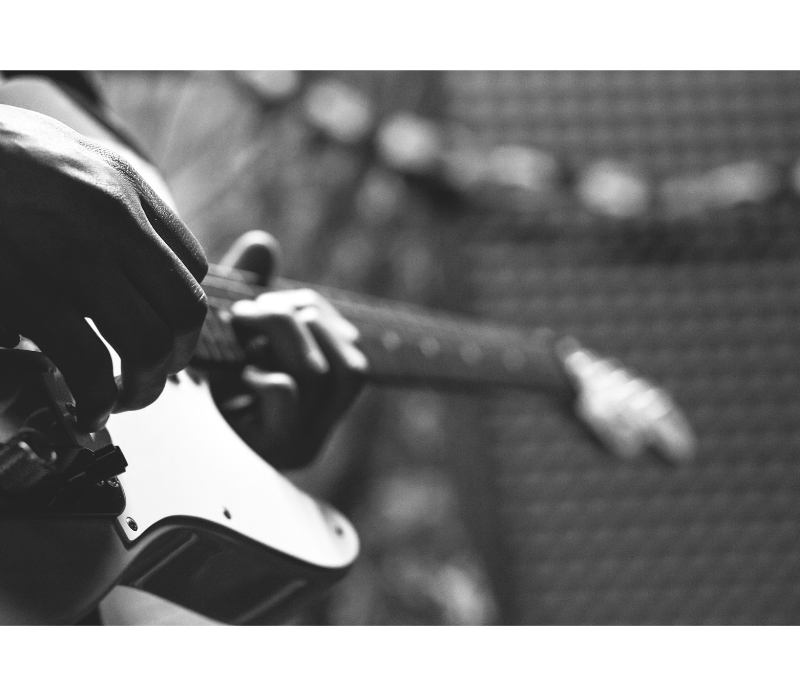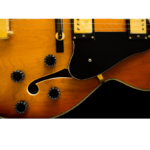Blues guitar chord progression is essential to learn on the guitar. Blues music is a timeless genre that has influenced countless styles and artists over the decades. Central to its soul-stirring sound are its distinctive chord progressions, which form the backbone of countless classic tunes. In this guide, we’ll explore the essential elements of blues guitar chord progressions, including how to play minor 7th chords, 9th chords, dominant 7th chords, and altered chords for the 1, 4, 5 blues progressions. With chord charts and practical tips, you’ll be equipped to bring your blues playing to life.
The Classic 12-Bar Blues Guitar Chord Progression
Before diving into specific chords, let’s revisit the classic 12-bar blues progression, the foundation of many blues songs. In the key of A, it looks like this:
A7 | A7 | A7 | A7 |
D7 | D7 | A7 | A7 |
E7 | D7 | A7 | E7 |
In this progression:
- A7 is the I chord
- D7 is the IV chord
- E7 is the V chord

Download FREE Guitar Charts!
We have 27 FREE guitar charts to help you learn the guitar fretboard. Learn How to play chords and scales with these free resources.
Free Guitar Resources
Minor 7th Chords
Minor 7th chords add a soulful, mellow tone to your blues playing. These chords are built by adding a minor seventh to a minor triad. Here’s how you can play them:
A Minor 7 (Am7)
e|---0---
B|---1---
G|---0---
D|---2---
A|---0---
E|-------
D Minor 7 (Dm7)
e|---1---
B|---1---
G|---2---
D|---0---
A|-------
E|-------
E Minor 7 (Em7)
e|---0---
B|---3---
G|---0---
D|---2---
A|---2---
E|---0---
To incorporate minor 7th chords into the 12-bar blues in A, you can use Am7, Dm7, and Em7 as substitutes for A7, D7, and E7, respectively.
Dominant 7th Chords
Dominant 7th chords are the cornerstone of blues music, providing the characteristic tension and release that define the genre. These chords are made up of a major triad plus a minor seventh.
A Dominant 7 (A7)
e|---0---
B|---2---
G|---0---
D|---2---
A|---0---
E|-------
D Dominant 7 (D7)
e|---2---
B|---1---
G|---2---
D|---0---
A|-------
E|-------
E Dominant 7 (E7)
e|---0---
B|---0---
G|---1---
D|---0---
A|---2---
E|---0---
Dominant 7th chords are used as the primary chords in the 12-bar blues progression. Experiment with sliding into these chords or adding embellishments to capture that authentic blues feel.
9th Chords
9th chords add a layer of complexity and color to your blues playing. They are often used to replace dominant 7th chords for a richer sound.
A9
e|---0---
B|---0---
G|---2---
D|---2---
A|---0---
E|-------
D9
e|---0---
B|---1---
G|---0---
D|---4---
A|---5---
E|-------
E9
e|---0---
B|---7---
G|---7---
D|---6---
A|---7---
E|-------
Try substituting 9th chords in your 12-bar progression to see how they alter the mood. For instance, play A9 instead of A7, D9 instead of D7, and E9 instead of E7.
Altered Chords
Altered chords, such as the augmented and diminished variations, introduce tension and are perfect for adding drama to your blues progressions.
A7#5
e|---x---
B|---x---
G|---6---
D|---5---
A|---4---
E|---5---
D7b9
e|---x---
B|---4---
G|---5---
D|---4---
A|---5---
E|---x---
E7#9
e|---0---
B|---8---
G|---7---
D|---6---
A|---7---
E|---0---
Incorporating these altered chords into your progressions can provide a sophisticated, jazz-influenced sound. For example, use E7#9 in place of E7 in the final bar of your 12-bar progression for a unique twist.
Putting It All Together: Blues Guitar Chord Progression
Now, let’s combine these elements to create a versatile blues progression. Here’s a sample 12-bar blues in A, using a mix of minor 7th, dominant 7th, 9th, and altered chords:
Am7 | Am7 | A9 | A9 |
Dm7 | D7 | Am7 | A9 |
E9 | D7b9 | Am7 | E7#9 |
Experiment with these chord substitutions and variations to develop your unique blues style. The beauty of blues lies in its flexibility and the personal touch you bring to each performance.
Tips for Smooth Transitions
Transitioning smoothly between chords is crucial for maintaining the flow and feel of your blues playing. Here are some tips:
- Practice Finger Placement: Focus on the common fingers between chords and use them as pivot points.
- Use Slides and Hammer-Ons: These techniques can help you transition seamlessly and add a bluesy touch.
- Slow Down: Practice transitions slowly at first, ensuring each note rings clearly.
- Visualize Chord Shapes: Visualize the next chord shape before moving your fingers to minimize hesitation.
Conclusion
Blues guitar chord progression are the heart and soul of the blues genre. By mastering minor 7th, dominant 7th, 9th, and altered chords, you’ll be able to create rich, expressive blues music. Remember, the key to great blues playing is not just technical proficiency, but also conveying emotion and telling a story through your music. So grab your guitar, dive into these progressions, and let the blues flow through your fingers!
With these insights and chord charts, you’re well on your way to mastering blues guitar chord progressions. Keep practicing, experimenting, and most importantly, have fun with your blues journey!

Download FREE Guitar Charts!
We have 27 FREE guitar charts to help you learn the guitar fretboard. Learn How to play chords and scales with these free resources.
Free Guitar Resources










